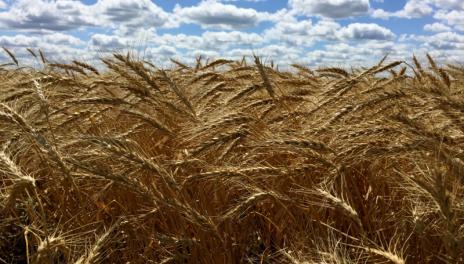Planting Barley and Spring Wheat
Hello! Hope you’re having a great day! Happy Spring!
We received a small amount of rain and snow this past week. The high temperature for the past week ranged from 43 to 53 degrees Fahrenheit with an average of 47 degrees Fahrenheit. That average is 8 degrees higher than the 39 degrees Fahrenheit average we should be having. What a warming trend. The forecast for the coming week looks to be above average mostly.
For those of you interested in horticulture, an in person virtual meeting series will take place at the County Courthouse on March 28, and April 4 and 11, 2021 from 6:30 to 8:30 PM. Please preregister by calling the extension office at 701-797-3312 or e-mailing jeff.stachler@ndsu.edu. This will be an excellent horticulture series!
Spring has sprung, so it’s time to start thinking about seeding wheat and barley.
First prepare the equipment. Make sure it is in proper working order. If using dual disc openers be sure they are of the proper diameter and proper distance between the disks. Make sure all bearings are working properly.
It is best to plant wheat following soybean and dry bean. This is to help reduce diseases. Crop rotation and seed treatments will reduce common root rot. Crop rotation and tillage will reduce ergot. Crop rotation will reduce bacterial blight. Crop rotation, resistant varieties, and fungicides will reduce Fusarium head blight (scab). Crop rotation, resistant varieties, and fungicides will reduce tan spot. Crop rotation, resistant varieties, and fungicides will reduce Septoria.
Choose wheat varieties on basis of disease resistance, yield, standability, protein content, and agronomic traits of the field where spring wheat or barley will be grown.
Optimum planting date for spring wheat and barley in our area is the fourth week of April. The last planting date is fourth week of May.
The desired stand at harvest for spring wheat and barley is between 1.3 to 1.4 million plants per acre and 1.25 to 1.3 million plants per acre, respectively. To get to these desired harvest stands be sure to take into account the historic field stand loss, which is usually around 10%, the germination rate and the number of seeds per pound. If planting is delayed past he optimum seeding date for spring-planted small grains, seeding rates should be increased by about one percent for each day planting is delayed up to a maximum of1.6 million seeds per acre.
Optimum seeding depth is between 1.5 to 2 inches. Some of the newer varieties are sensitive to seeding depth, causing the coleoptile tiller to not emerge properly.
Calibrate your drill or air seeder to make sure you are seeding the correct amount of seed.
If planting no-till, be sure to control all existing weeds prior to planting. With kochia being present at about 80% of soybean fields last year it is very important to design a good herbicide program for the season. One of the best ways to control kochia and waterhemp is to apply Sharpen early preplant in no-till or preemergence in tilled fields. The Sharpen must be applied prior to the emergence of the spring wheat or barley. Apply between two and four fluid ounces of Sharpen per acre in spring wheat or two fluid ounces per acre for barley. If using in no-till include methylated seed oil at 1 to 1.5 pints per acre.
For postemergence herbicides to effectively control kochia use three active ingredients such as bromoxynil, pyrasofotole or bycylopyrone plus fluroxypyr and apply to small kochia (less than three inches in height). Be sure to include the best adjuvants to maximize activity.
Good luck with the spring wheat and barley growing season.
